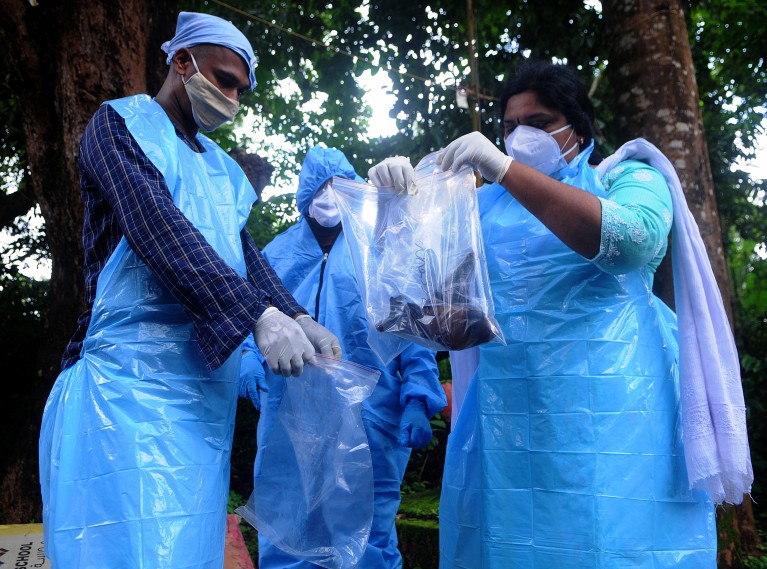
Officials deposit a bat into a plastic bag in September 2021 in Kerala. The Nipah virus is carried mainly by fruit-eating bats. Credit: C. K Thanseer via Getty Images
Kerala has reported its fifth Nipah virus outbreak since 2018 in the district of Malappuram. There is no vaccine or treatment for symptoms of the virus, which can cause acute respiratory infection and fatal encephalitis. Nipah is considered by the WHO (World Health Organization) as an emerging zoonotic pathogen with epidemic or pandemic potential.
Transmission occurs primarily through the consumption of fruit products contaminated with the virus, direct contact with infected humans, or through contact with the secretions of a virus-infected fruit bat.
The current outbreak has resulted in fatality but is said to represent a ‘low risk’ of further spread. The increasing number of Nipah outbreaks, however, has brought calls for improved health security measures.
Last year, Kerala faced a similar outbreak that had resulted in six-confirmed cases and two fatalities. Kerala’s response to Nipah virus was characterized by heightened disease surveillance, social distancing, mandatory mask-wearing in public areas, and limited public movement. While the present outbreak has not demanded such a response, a large-scale outbreak would trigger the state health machinery to revert to these measures.
Research1 demonstrates, however, that public health responses towards Nipah virus require a contextual understanding of its specific transmission dynamics and the factors that trigger outbreaks in humans. This indicates that preventative measures, such as used for the COVID-19 pandemic, are not necessary to combat Nipah virus, but that a deeper understanding of viral spillover events is crucial to ensure measures applied are directed towards the source of the viral outbreak.
Researchers call for a novel approach to managing Nipah virus outbreaks, citing Nipah’s transmission dynamics as the primary cause2. Because Nipah virus is transmitted primarily through the consumption or contact with contaminated fruit products, or from infected humans in close clinical or household settings, attention must focus on these transmission points. Community level action, including border screening and travel restrictions, may not be appropriate. Furthermore, screening at borders may not be sensitive to identify asymptomatic or mild forms of the illness. Measures that focus on contact tracing are beneficial as evidenced during Kerala’s management of the 2018 outbreak3.
Understanding of viral spread can contribute to the development of health frameworks that prevent outbreaks from occurring. For instance, Nipah virus’s zoonotic origin and spillover onto humans is an example of the urgent need to strengthen India’s One Health framework. Changes in land use, economic activities, and climate change have contributed to altering the ecosystem of its reservoir host, the fruit bat4. Under these stressful conditions the virus crosses the species barrier.
Case studies from Bangladesh1, where similar outbreaks have been reported, emphasise the need to communicate the causes of Nipah outbreaks to the public. Indian outbreaks have been linked to plantations, where seed collectors pick up cashew nuts and areca nuts contaminated by infected fruit bats. On these surfaces Nipah virus can remain active and potentially contribute to spread for 30 hours. In addition, measures5 that focus on transmission routes, such as strict quarantine practices at home, hygienic protocols after the collection of date palm sap, and use of bamboo skirts that hinder bats from accessing sap, are examples of steps that can be adopted to prevent outbreaks.
